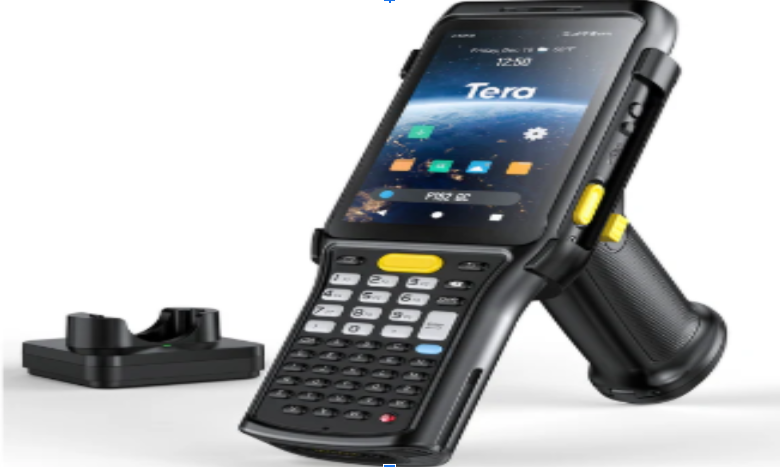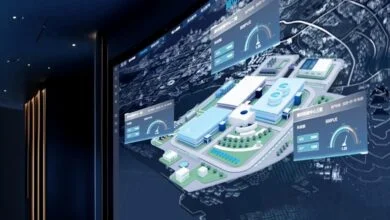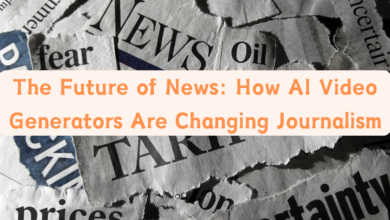Integrating Mobile Devices and IoT for Strategic Business Growth

Understanding AI and IoT
The convergence of Artificial Intelligence (AI) and the Internet of Things (IoT) is transforming industries, creating intelligent and autonomous systems that not only collect data but also analyze it, learn from it, and take action. This potent combination, often referred to as the Artificial Intelligence of Things (AIoT), is revolutionizing how businesses operate and interact with their environment.
Defining IoT
The Internet of Things (IoT) is a network of interconnected devices that collect and exchange data. These devices, which can range from smart fridges to industrial sensors, constantly gather information about their environment and how they are being used. For example, a smart thermostat tracks temperature changes, while industrial sensors measure machine performance and energy consumption.
Defining AI
Artificial Intelligence (AI) simulates human intelligence processes by machines, especially computer systems. AI examines enormous volumes of data, finds trends, and makes decisions or predictions based on that analysis. AI takes many forms, from simple rule-based systems to complex neural networks that learn and adapt over time.
The Synergy of AI and IoT
The synergy of AI and IoT, known as AIoT, enables intelligent, autonomous systems. These systems collect data, analyze it, learn from it, and take action based on it. For instance, a smart home system learns user habits and automatically adjusts the temperature. Wearable devices can collect vital signs, while AI algorithms analyze this information to predict potential health issues.
See also: Top Features of Modern UPS Technology
Benefits of Integrating AI with IoT
Integrating AI with IoT unlocks a range of benefits that enhance business operations and improve efficiency. Companies can leverage this integration to achieve enhanced predictive maintenance, improved energy management, personalized customer experiences, enhanced safety and security, optimized supply chain management, improved healthcare outcomes, smart agriculture, and autonomous vehicles.
- Enhanced Predictive Maintenance: IoT sensors collect data on equipment performance, while AI algorithms analyze this data to predict when maintenance is needed, reducing downtime and costs.
- Improved Energy Management: IoT sensors monitor occupancy, temperature, and energy usage, while AI optimizes heating, cooling, and lighting in real-time, resulting in significant energy savings.
- Personalized Customer Experiences: AI and IoT examine previous purchases and browsing activity to provide tailored suggestions.
- Enhanced Safety and Security: AI-powered cameras and sensors detect unusual activities and alert authorities in real-time.
- Optimized Supply Chain Management: IoT devices track inventory and shipments, while AI predicts potential disruptions and suggests alternative routes or suppliers.
- Improved Healthcare Outcomes: Wearable IoT devices monitor vital signs, while AI analyzes this data to predict health issues early.
- Smart Agriculture: IoT sensors monitor soil conditions and weather, while AI optimizes irrigation and fertilization.
- Autonomous Vehicles: IoT sensors gather traffic data, while AI makes decisions to ensure safe and efficient travel.
The integration of AI and IoT creates a feedback loop of continuous improvement. The more data IoT devices collect, the smarter AI systems become, allowing them to control and optimize IoT devices effectively.
Key Considerations for Integrating AI with IoT
Successful integration of AI and IoT requires careful planning and consideration of several key factors. Instead of simply applying AI algorithms to your IoT devices, you need to ensure data quality and quantity, edge computing vs. cloud computing, security and privacy, scalability, interoperability, power management, real-time processing, and user experience.
- Data Quality and Quantity: Ensure your IoT devices collect high-quality, relevant data.
- Edge Computing vs. Cloud Computing: Decide where your AI processing will happen. Edge computing can enhance privacy and lower latency. while cloud computing offers more processing power.
- Security and Privacy: Install robust security mechanisms to protect your AIoT system and comply with data privacy regulations.
- Scalability: Your AIoT solution should be able to grow with your business.
- Interoperability: Ensure your AIoT solution integrates seamlessly with existing infrastructure and future technologies.
- Power Management: Consider how AI processing impacts battery life and explore energy-efficient AI algorithms.
- Real-time Processing: Ensure your system can process data and generate insights quickly enough to be actionable.
- User Experience: Design your solution with the end-user in mind.
Steps to Successfully Integrate AI with IoT
Integrating AI with IoT involves several key steps. This is not a one-time project but an ongoing process of refinement and optimization.
- Define Your Objectives: Decide what you hope to accomplish. whether it’s improving efficiency, enhancing customer experiences, or predicting maintenance needs.
- Assess Your Current Infrastructure: Evaluate your existing IoT devices and AI capabilities to identify gaps and determine necessary investments.
- Choose the Right IoT Devices: Select sensors and devices that collect the specific data you need.
- Select Appropriate AI Algorithms: Choose AI algorithms that can deliver the insights you need, such as machine learning or deep learning.
- Design Your Data Pipeline: Plan how data will flow from IoT devices to AI systems, considering data storage and processing.
- Implement Edge Computing Where Appropriate: Process data closer to the source for applications requiring low latency or having privacy concerns.
- Ensure Robust Security Measures: Implement end-to-end security measures to protect your AIoT system from cyber threats.
- Develop a User-Friendly Interface: Create an interface that allows users to interact with the AIoT system and understand the insights provided.
Comparison of IoT vs AI
Aspect
IoT
AI
Primary Function Collects and transmits data Analyzes data and makes decisions
Data Handling Generates large volumes of data Processes and interprets data
Decision Making Limited to pre-programmed responses Can make complex, adaptive decisions
Learning Capability Does not learn or improve over time Can learn and improve with more data
Real-world Interaction Directly interacts with the physical world Typically operates in the digital realm
Scalability Easily scalable by adding more devices Scalability depends on computing power
Power Requirements Often battery-powered, low energy Requires significant computing power
Primary Use Cases Monitoring, data collection Prediction, optimization, automation
Challenges and How to Overcome Them
Integrating AI for IoT is not without its challenges. High-quality data is crucial for effective AI analysis, connecting disparate systems can be daunting, and robust security measures are need to be implemented, you need to overcome it. The challenges may involve data quality issues, integration complexity, skill gaps, security concerns, scalability challenges, cost management, user adoption, and regulatory compliance.
- Data Quality Issues: Implement data cleaning and validation processes to ensure accuracy.
- Integration Complexity: Utilize middleware solutions to facilitate seamless integration.
- Skill Gaps: Invest in training programs or partner with experts to bridge knowledge gaps.
- Security Concerns: Implement robust security measures to protect your system from cyber threats.
- Scalability Challenges: Design your system with scalability in mind.
- Cost Management: Develop a clear budget and ROI analysis.
- User Adoption: Focus on user-friendly design and provide comprehensive training.
- Regulatory Compliance: Ensure your AIoT solution complies with relevant regulations.
Embracing the Future with AIoT
Integrating AI with IoT offers transformative potential for creating smarter solutions across industries. The synergy of these technologies improves operational performance and opens new avenues for growth and customer engagement.
Mobile Devices in IoT Integration
Mobile devices play a vital role in IoT integration, serving as essential tools for data collection, remote management, and real-time monitoring. Mobile computers equipped with specialized sensors and connectivity options are increasingly being used in various industries to enhance operational efficiency. These devices facilitate seamless communication between IoT devices and centralized systems, providing users with intuitive interfaces for accessing and controlling connected devices.
From healthcare providers remotely monitoring patients’ vital signs to logistics managers tracking shipments in real-time, mobile devices are enabling actionable insights and driving smarter decisions across diverse applications.
By embracing mobile devices in IoT strategies, businesses can unlock new levels of efficiency, productivity, and customer satisfaction in today’s interconnected world.




